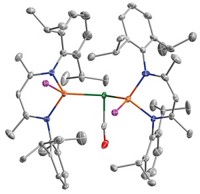Advertisement
Grab your lab coat. Let's get started
Welcome!
Welcome!
Create an account below to get 6 C&EN articles per month, receive newsletters and more - all free.
It seems this is your first time logging in online. Please enter the following information to continue.
As an ACS member you automatically get access to this site. All we need is few more details to create your reading experience.
Not you? Sign in with a different account.
Not you? Sign in with a different account.
ERROR 1
ERROR 1
ERROR 2
ERROR 2
ERROR 2
ERROR 2
ERROR 2
Password and Confirm password must match.
If you have an ACS member number, please enter it here so we can link this account to your membership. (optional)
ERROR 2
ACS values your privacy. By submitting your information, you are gaining access to C&EN and subscribing to our weekly newsletter. We use the information you provide to make your reading experience better, and we will never sell your data to third party members.
Synthesis
Tin Alkyne Analog's On-Off Cycloaddition
A tin analog of acetylene, a compound with a rare Sn≡Sn bond, reversibly adds ethylene across the triple bond under ambient conditions
by Stephen K. Ritter
September 28, 2009
| A version of this story appeared in
Volume 87, Issue 39

A tin analog of acetylene, a rare compound with a Sn≡Sn bond, is proving to have unusual reactivity: It reversibly adds two ethylene molecules across the triple bond under ambient conditions, a reaction normally forbidden to its carbon analog, report Yang Peng, Philip P. Power, and coworkers of the University of California, Davis (Science 2009, 325, 1668). Cycloaddition reactions involving alkenes or alkynes are classic transformations in organic synthesis, leading to stable products. These reactions are normally "symmetry forbidden," meaning that under standard conditions the molecular orbital overlap is insufficient for bonding to occur. This barrier can be overcome by boosting the energy of the system with heat or light. In contrast, alkene and alkyne analogs of silicon, germanium, tin, and lead can undergo cycloadditions under mild conditions. But until now, even those reactions were irreversible. The UC Davis team showed that once ethylene adds to the triple bond of the distannyne RSn≡SnR, where R is a bulky phenyl group, the ethylene molecules of the isolable adduct that forms can pop off with a gentle change in temperature or pressure.




Join the conversation
Contact the reporter
Submit a Letter to the Editor for publication
Engage with us on Twitter